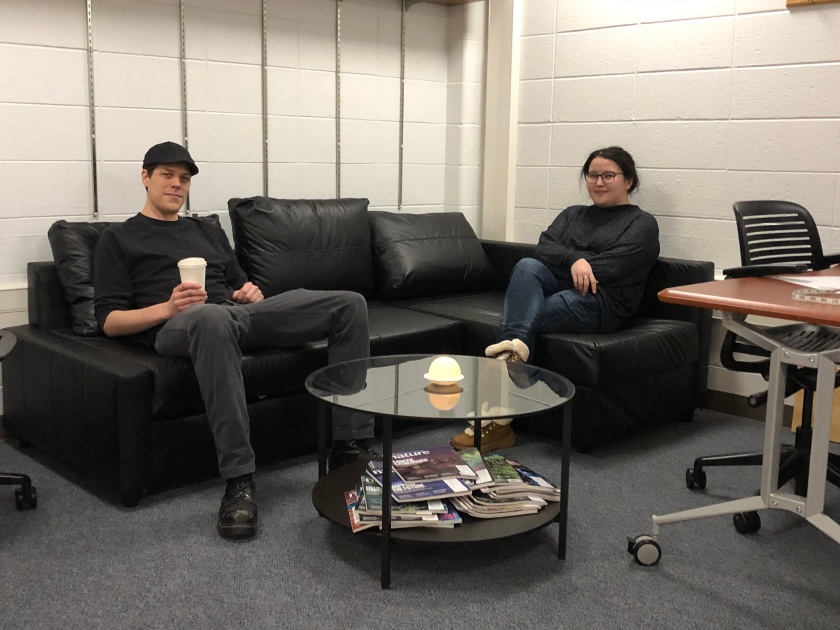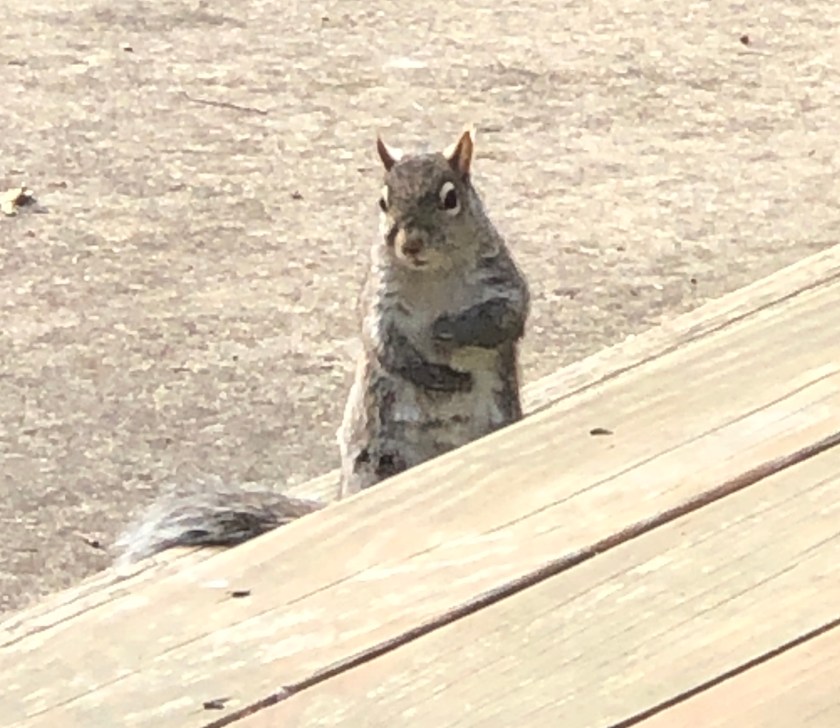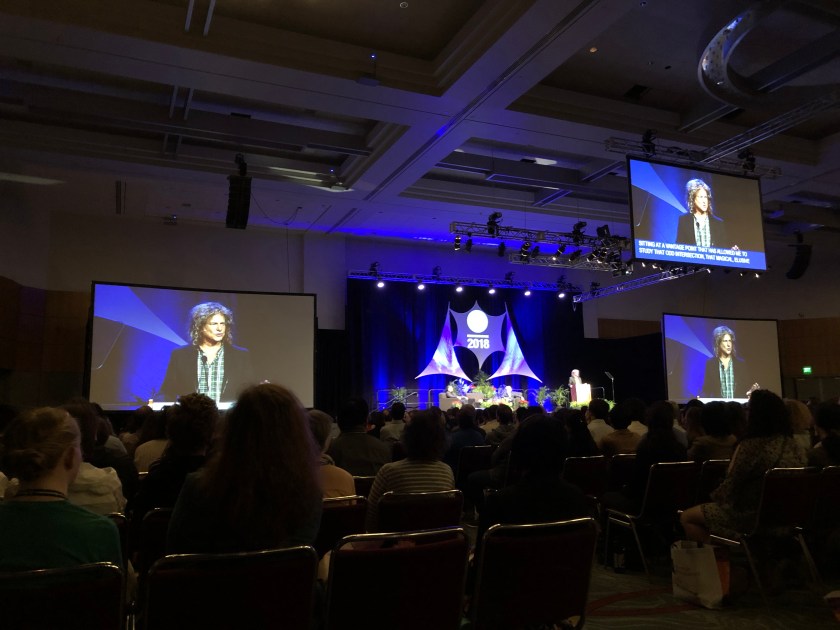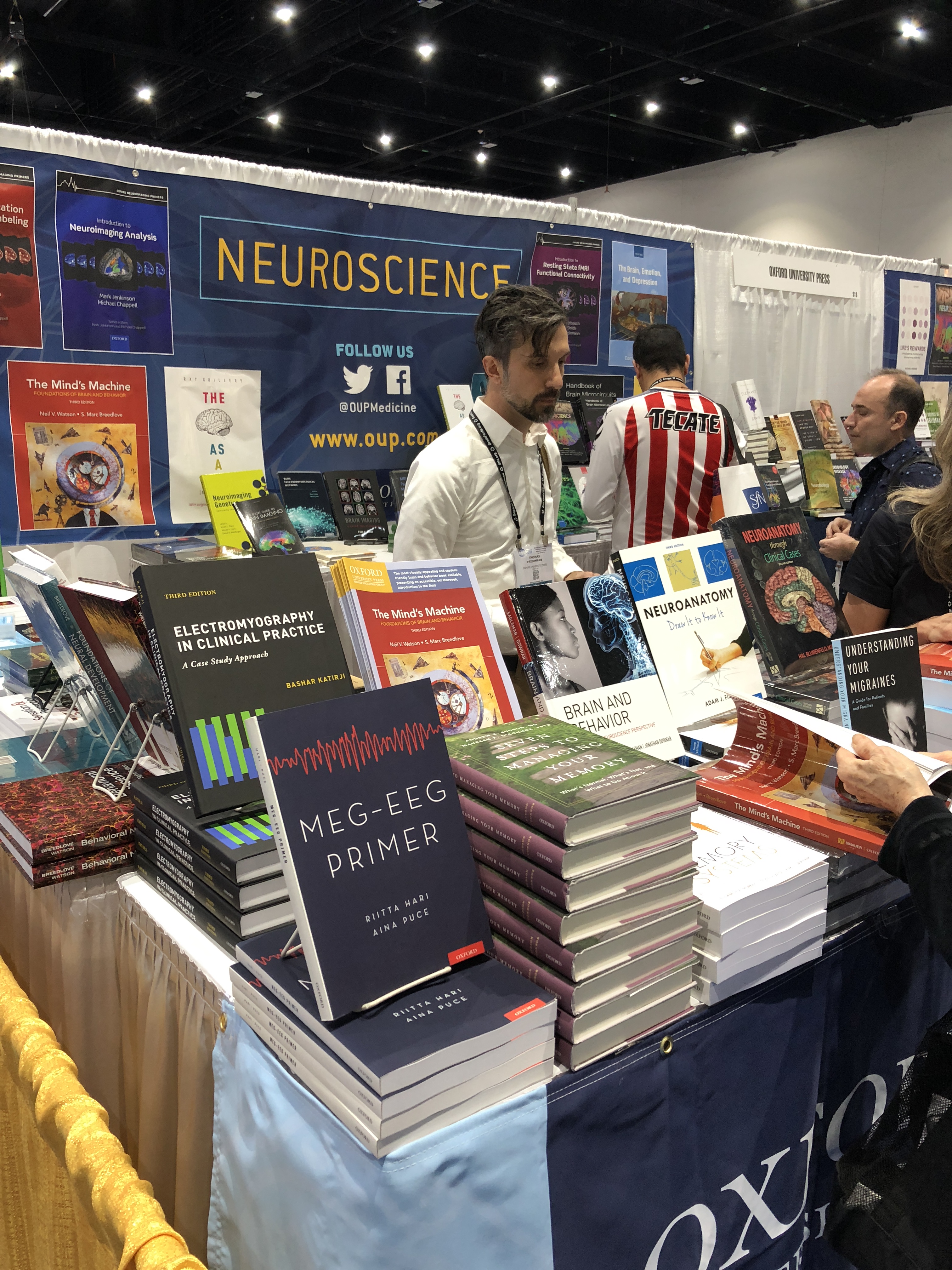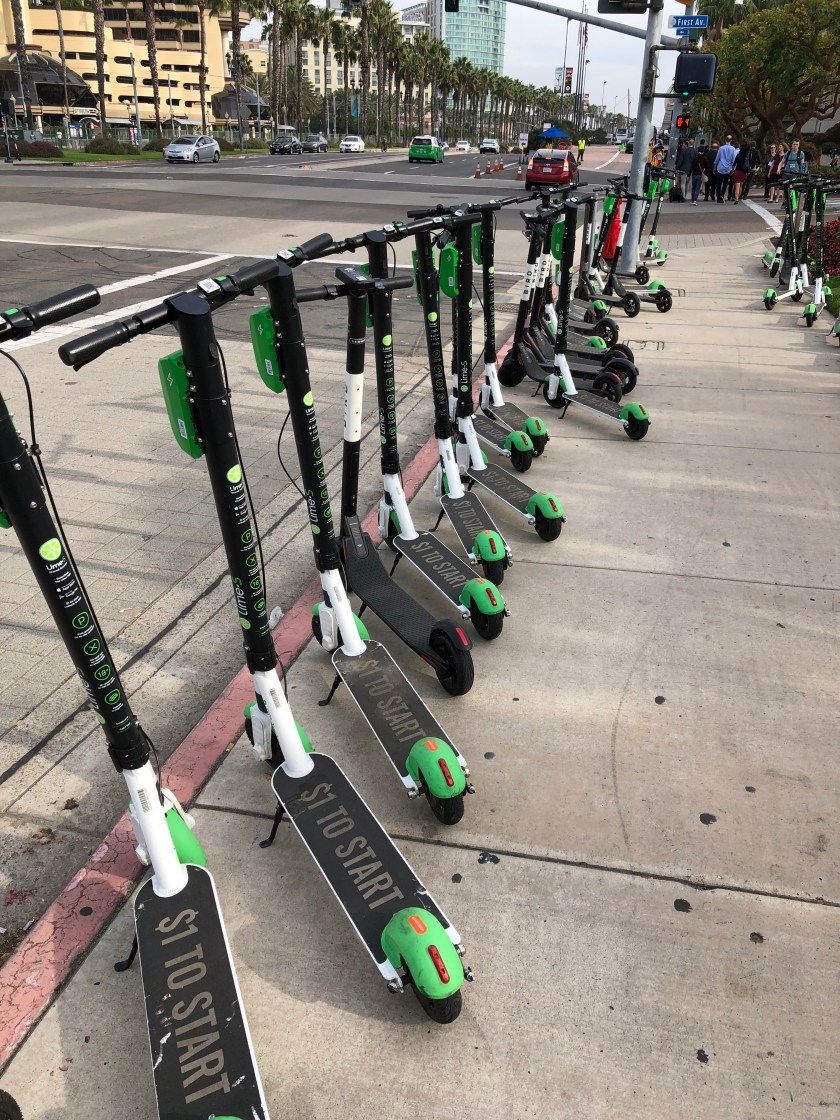So the Equinox is over & we are officially into Spring. Does not seem that way. I was recording my online lecture yesterday afternoon now that we are in COVID-19 social isolationg & had to pause the recording because I noticed it was snowing & we had plants outside! But that is the rollercoaster of Spring here in the US midwest.
In my previous post I featured most of the people in Team OHBMx – the machine behind https://ohbmx.org/ & @OHBMequinoX, but I did not get to everyone. The Aussie Hub started us off with Michael Breakspear‘s Keynote – a fabulous investigation of brain activity modes in premature babies. Tour de force investigation in so many ways – hard to get this activity in the first place, difficult to source model because of fontanelles, lots of technical issues to solve… A great way to kick us off & with lots of excitement in response to his talk. Ppl were tweeting to signal the start of #OHBMx to draw attention to the meeting [#OHBMx program is here for those of you who missed it: https://ohbmx.org/program/]
Of course Michael’s Keynote Tweets can be viewed here: https://twitter.com/OHBMequinoX/status/1240820864083349505 While Michael Breakspear [@DrBreaky] was keynote tweeting, behind the scenes the Aussie hub was working hard. Pressure was on – they were starting off the 24 hour meeting & were the ‘new kids on the block’ relative to the Euro & US hubs – no pressure… Incredible efforts by Megan Campbell [@MegaEJ_Campbell], Léonie Horne [@LeonieBorne] & Nikitas Koussis [@KoussisNikitas]!!! They started the meeting off beautifully – everything running smoothly. [And this is easier said than done…] Thank you so much for volunteering to do this! Their smiling faces appear below:
And from the US hub we also had Sheran Khan – his photo appears further down in our feed.
While the hubs were doing their thing, I was valiantly trying to stay awake for the duration – to try to ask questions, offer suggestions & make comments etc. So I decided that I would make my #OHBMx headquarters in our Man Cave at home – booted the other half out of there for 24 hours. Nah, not quite, he was coming in to follow along the fun while he was awake. Here is my ‘pajama’ picture from the couch around 11 pm or so – we started at 10 pm our time.
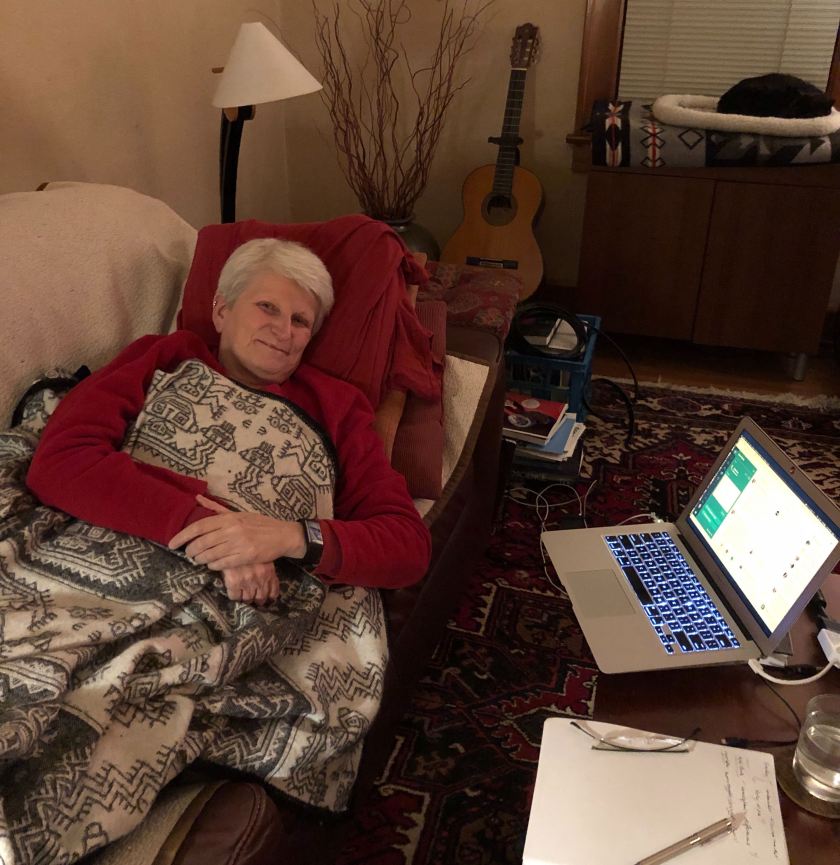
Over the course of next 24 hours, I confess: I lasted 23 24 hours. I had my two trusty editorial assistants helping out – initially they were on the couch watching the action, but later when everything was under control they decided to retire to the periphery of the Man Cave – in the right pic below you can see daylight as we are into the next day already here!
As the conference progressed the tweeting began to show more & more creative use of video, which prompted Team OHBMx Head Enrico Glerean [@eglerean] to issue a challenge: perhaps we might consider an award for the best video! There were many very amusing videos – which of course were right on track with the presentations, but my personal favorite was Léonie Horne’s. Why? Because she starred in it herself & it was very witty & fitted totally with her chosen theme!
The transition from the Aussie hub to Euro hub was seamless:
I confess that I missed the transition. I was practicing the ancient art of human brain napping. Why? In addition to taking rests between devoting my full attention to scientific presentations, in our location we had a deluge – 15 cm [6 inches] of rain in the 24 hour period that was #OHBMx. This meant that during the night I was also having to run down to our basement to make sure that the incoming water would not get out of control. Was able to contain it to one location & deal with it. Lucky thing I was up all night, otherwise it would have been quite an unpleasant surprise in the basement the next day!
So here are some action shots of Euro hub TeamOHBMx hard at work chairing their respective sessions during their stint at the control panel of the meeting: Michele V & Juulia, Onerva, Onerva & Narayan, & finally Baran & Koos.
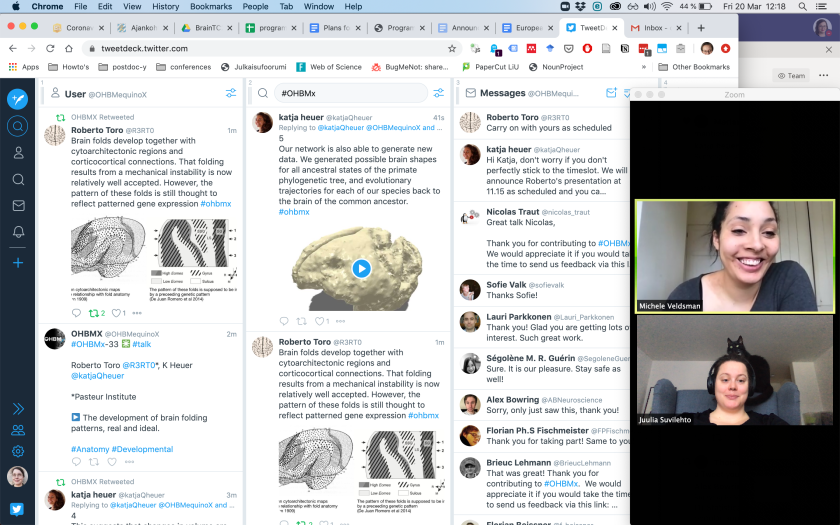
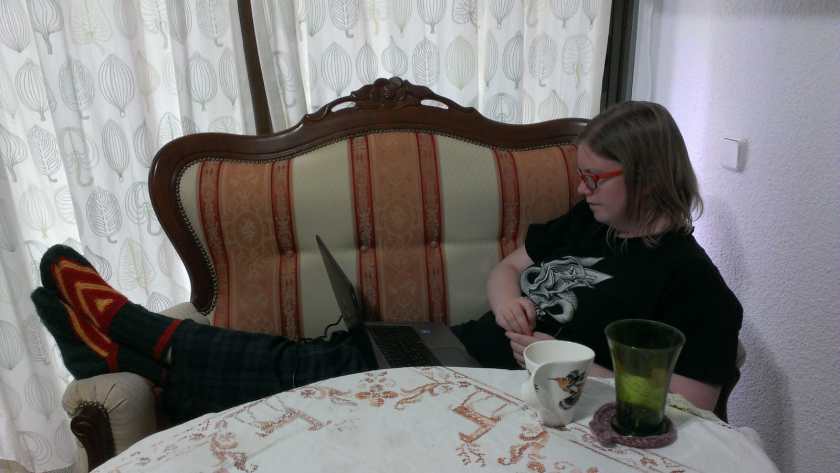
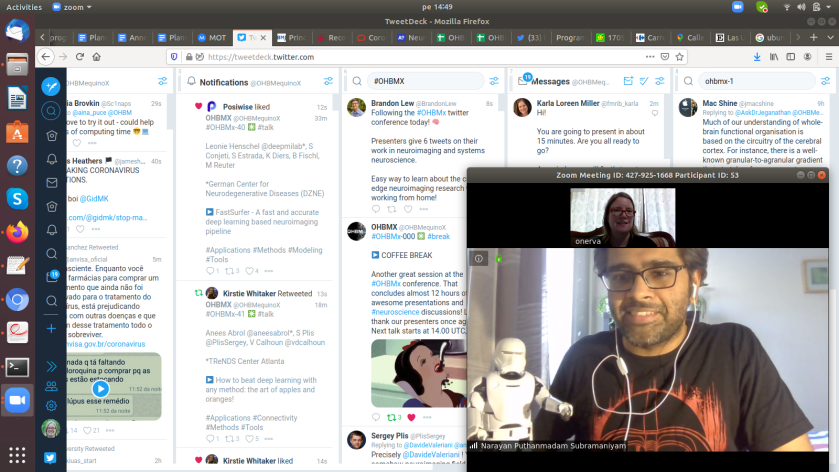
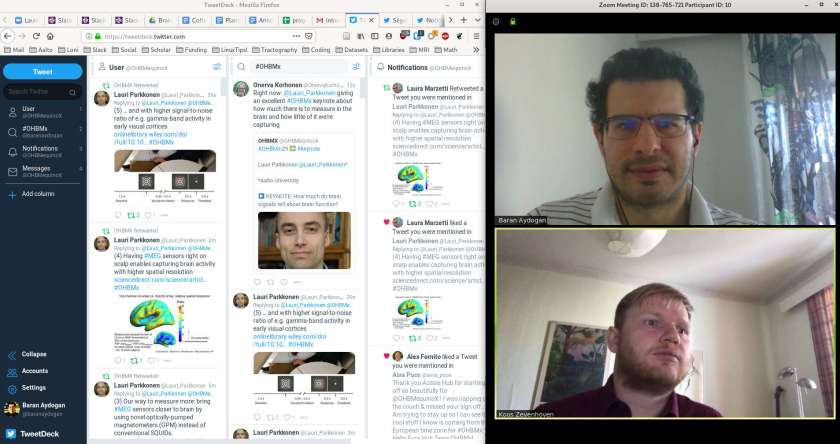
And a reaction to something going awry – not necessarily on the ongoing [visible] Twitter feed, but behind the scenes – which we were all monitoring in Slack as well – I had it on my cell phone while looking at the #OHBMx Twitter feed on my laptop. [Permission by Juulia to post this shot…]

The hub baton was handed over a third time to the Team OHBMx US hub – with Dimitrios Pantazis & Sheraz Khan at the helm – again these are seasoned Twitter conference hubbers. So they approached things in a lay back way:
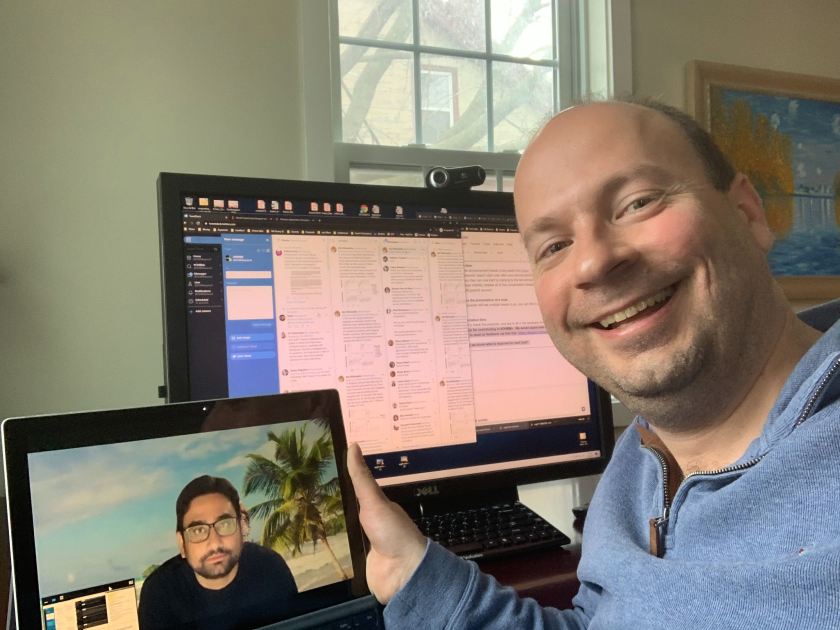
Dimitrios had it all under control using two computers & Sheran decided he wanted to be in a virtual Hawaii. Makes sense if you are in Boston at this time of year! They also tweeted that shot. That said though, here is a shot of Sheran’s screen:
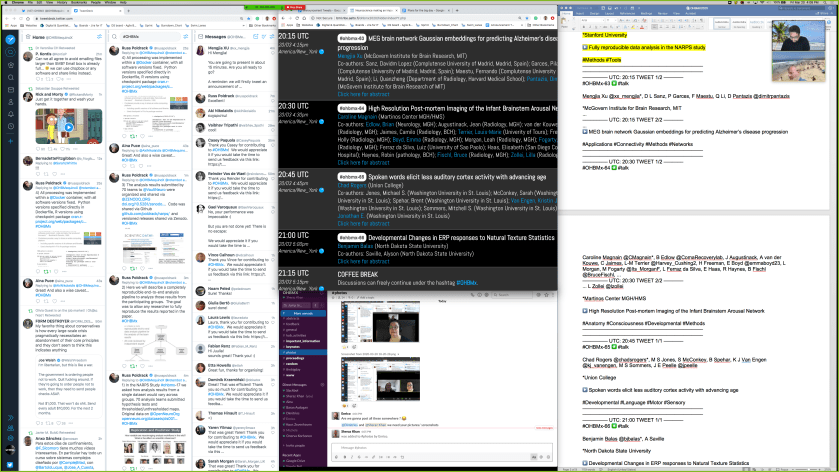
So he has it all going on on the monitor at once: the Tweetdeck #OHBMx feed, the #OHBMx program, Slack, & the Googledoc with the cue tweets to introduce each presentation. As you can see, there is a lot that has to be monitored at a time. Two people chairing at a time is needed – tweeters have to be contacted ahead of time to make sure they are ready, and current tweeters need to be monitored that they are keeping to time, posting appropriate content etc…
So here is a warning for those who want to do something like this. This is hard work. IMHO to organize this & run this meeting is in some ways is harder than running the main OHBM scientific meeting in June. The logistics are so complicated – presenters in multiple time zone to contend with [some regions with & without daylight saving], technical problems that tweeters might encounter that have to be solved remotely, alternate action plans needing to be implemented if a tweeter does not get their sequence of tweets right. And this happens, despite the given instructions to Tweeters. Why? Because we rely on technology to function perfectly. Sometimes this does not happen. I was a Keynote Tweeter in the #BrainTC conference in 2018. I was nervous & happily did not screw up, but I remember I had to totally keep my attention on task…
I am not going to feature the other Keynotes or Regular tweeters presentations here. They were all excellent – the quality of the science was truly exceptional – as one would expect of an activity tied to OHBM. What blew me away was the ability of the presenters to present incredibly complex work [data & analyses] using only 6 tweets. [Keynotes had 10.] Figures etc. were really informative for the viewer! Do check out the presentations by searching on the #OHBMx hashtag or the @OHBMequinoX feed. We had a plan to organize & make the contents accessible on the regular OHBM website. For now there are 2 options: 1. you can just search on Twitter using those #OHBMx hashtag or @OHBMequinoX. 2. Or, even better, why not use this newly minted tool created by Anibal Sólon [@anibalsolon]. He just told us about it today – see our Tweet below providing links to his resource, [thank you Anibal!!!]:
Now, also do not forget to check out the @OHBM_Trainees & their activities – get involved with the OHBM_Trainees, a special interest group [check them out on the OHBM website: https://www.humanbrainmapping.org/i4a/pages/index.cfm?pageid=3449]. They co-ordinate activities of our huge postdoc & graduate student membership. Lots of activities all year round – not just at the OHBM scientific meeting in June. Advice regarding careers & also chances to hook up with mentors who are senior scientists. [I have been a mentor thru this program – I recommend it. My mentee was a postdoc who went on to find a faculty position – I am delighted for him!] So check out OHBMx-73: their presentation at the Twitter conference for more information & of course also the OHBM website [see link above].
So, now that #OHBMx is over there is nothing else left to do but hunker down at home & teach & work the rest of the semester from home. That & LOTS of Zoom meetings! This means work & also play – we have already have had virtual dinners/drinks with friends in the evenings.
Stay well & remember to reach out to those who are isolated – people on their own that need to have some online/phone company…








